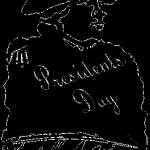How Philadelphia Lost Its Capital City Title To Washington, DC
Most people likely know that Washington, DC is not the first U.S. Capital. However, do you know why Philadelphia stopped being the nation’s capital? Discover details of the move of the nation’s capital from Philadelphia, the historical events, and details related to the move that made Washington D.C. the capital of the United States.
The U.S. Capital In Philadelphia
Philadelphia became the United States Capital in 1790. The Times Ledger explains that New York City was the original capital until it was time for ‘federal district’ on the banks of the Delaware River near Philadelphia to be completed. However, several historical meetings and actions took place in New York, including the inauguration of George Washington as the first U.S. President and the organization of executive offices.
Once the U.S. Capital moved to Philadelphia, many people, including the Federalists, hoped that Philadelphia would remain the U.S. Capital. However, like New York, Philadelphia was not meant to serve as the permanent U.S. Capital. Throughout the near-decade that Philadelphia served as the Capital, many historical events occurred.
The mansion, built by Mary Lawrence Masters and gifted to the bride of Governor Richard Penn remained home to the Penn family for only three years. During the British occupation of Philadelphia, General Howe commandeered the property, making it his residence and headquarters. After the British abandoned Philadelphia, Benedict Arnold moved in and made the mansion his home.
After a major fire, Robert Morris rebuilt the house, adding several additional rooms, which George Washington eventually moved into, insisting on paying rent to Morris.
The Executive Branch of the Federal Government conducted its business in the Philadelphia Capital, which also served as the location for state dinners. Numerous other official and entertainment functions occurred at the Philadelphia Capital.
However, as the Independence Hall Association points out, when Yellow Fever took the lives of more than 10 percent of the population, efforts to keep Philadelphia as capital became a hopeless endeavor.
Washington D.C. Becomes The U.S. Capital
While many of the U.S. leaders busied themselves with moving the U.S. Capital to Washington D.C., George Washington secretly worked on attempting to make Virginia the U.S. Capital. Eventually, D.C. became the capital as part of a political compromise. Eyewitness to History describes the compromise as the Republicans, led by Thomas Jefferson, who accepted the Federalist proposal that the national government should pay the state debts incurred during the war of independence. The exchange was that the Federalists, led by Alexander Hamilton, would agree to situate the capital at a place chosen by George Washington.
Washington chose architect, engineer and former Continental Army Officer, Pierre Charles L’Enfant to design and plan the layout of the Washington D.C. Capital.
Washington never got to serve in the new Capital. He died December 14, 1799, while construction was still underway.
Moving Day For John And Abigail Adams
The Residence Act of 1790 designated Washington D.C. as the new U.S. Capital. Moving into the new U.S. capital was anything but a move straight into a grand mansion. John Adams actually moved into Union Tavern until construction was completed enough for him to move into the new Capital.
When John Adams finally moved into the executive mansion, his wife Abigail soon followed. Although she wrote her sister, stating that the house was built for ages to come, Abigail also confided to her sister, that she had much rather would have lived in the house in Philadelphia.
Permanent Home Of The U.S. Capital
Abigail Adams eventually settled into her new home. The U.S. Congress convened for the first time at the U.S. Capitol on November 17, 1800.
After the British burned the Capitol Building in 1814, during the War of 1812, new construction began, “built for ages to come,” which stands mostly unchanged today.







